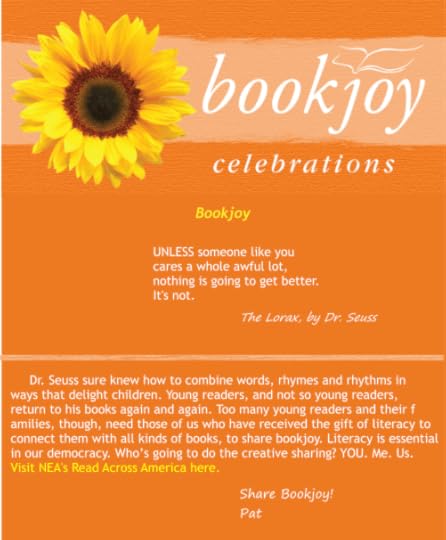Pat Mora's Blog, page 72
March 23, 2012
Gracias to Con Tinta and UNLV
Thanks to poet and Pilgrimage editor and publisher Maria Melendez and her Con Tinta colleagues, I enjoyed a wonderful day in Chicago, March 1. The Association of Writers & Writing Programs (AWP) was having its annual conference, and Maria et. al. had organized a 2012 AWP Tribute for me that they'd titled: "Eloquence & Bookjoy." I read from published and new writings, and Diana Garcia, Beatriz Terrazas, John Drury & Xánath Caraza generously spoke about my work. A special memory.
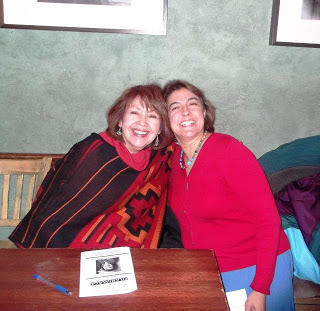 Photo by Xanath Caraza
Photo by Xanath Caraza
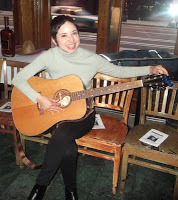 Photo by Xanath CarazaThat evening Con Tinta, hosted a Pachanga at which I saw writing friends and met new writers. Paloma Martinez-Cruz provided guitar music, and poets Irasema Gonzalez and Diana Pando read some of my poems to the audience. I received the Con Tinta Achievement Award for Literary Activism and a wonderful statue of Our Lady of Guadalupe from Oaxaca. Maria and her colleagues are all busy people, and I wish to express my deep thanks to her and all who created two special memories and who deepened my commitment as a writer and literacy/literary advocate.
Photo by Xanath CarazaThat evening Con Tinta, hosted a Pachanga at which I saw writing friends and met new writers. Paloma Martinez-Cruz provided guitar music, and poets Irasema Gonzalez and Diana Pando read some of my poems to the audience. I received the Con Tinta Achievement Award for Literary Activism and a wonderful statue of Our Lady of Guadalupe from Oaxaca. Maria and her colleagues are all busy people, and I wish to express my deep thanks to her and all who created two special memories and who deepened my commitment as a writer and literacy/literary advocate.
Con Tinta is a coalition of Chicano/Latino cultural activist poets and writers who believe in affirming a positive and pro-active presence in American literature. Con Tinta's mission is to create awareness through the cultivation of emerging talent, through the promotion and presentation of artistic expression, and through the collective voice of support to its members, communities, and allies.
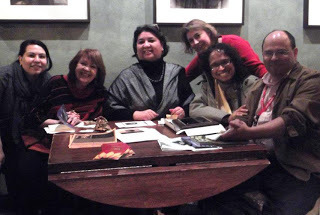 Photo by Xanath Caraza
Photo by Xanath Caraza
On March 17, I had the good fortune to be part of the University of Nevada Las Vegas' first Gayle A. Zeiter Children's Literature Conference. My friend, Dr. Cyndi Giorgis chaired the friendly group of UNLV colleagues and students who created a day with lots of helpful strategies for promoting books for children. I again enjoyed listening to talented illustrator and writer James Ransome and was glad to also meet and listen to his wife, the writer Lesa Cline-Ransome. Each is mighty talented and as a duo presenting their work and ideas, they are mighty funny.
Children's Literature Conferences are an effective strategy for gathering librarians, teachers, professors, etc. who want to share their commitment to children and literacy and for motivating attendees and presenters to re-commit to this challenging goal. I enjoyed speaking about my writing, Día, sharing bookjoy, creativity, and the art of teaching and writing. As always, I enjoyed chatting with attendees and was inspired by their commitment to students and young people. Congratulations to Cyndi and her colleagues on initiating an important tradition and for including me in their inaugural event.


 Photo by Xanath Caraza
Photo by Xanath Caraza Photo by Xanath CarazaThat evening Con Tinta, hosted a Pachanga at which I saw writing friends and met new writers. Paloma Martinez-Cruz provided guitar music, and poets Irasema Gonzalez and Diana Pando read some of my poems to the audience. I received the Con Tinta Achievement Award for Literary Activism and a wonderful statue of Our Lady of Guadalupe from Oaxaca. Maria and her colleagues are all busy people, and I wish to express my deep thanks to her and all who created two special memories and who deepened my commitment as a writer and literacy/literary advocate.
Photo by Xanath CarazaThat evening Con Tinta, hosted a Pachanga at which I saw writing friends and met new writers. Paloma Martinez-Cruz provided guitar music, and poets Irasema Gonzalez and Diana Pando read some of my poems to the audience. I received the Con Tinta Achievement Award for Literary Activism and a wonderful statue of Our Lady of Guadalupe from Oaxaca. Maria and her colleagues are all busy people, and I wish to express my deep thanks to her and all who created two special memories and who deepened my commitment as a writer and literacy/literary advocate.Con Tinta is a coalition of Chicano/Latino cultural activist poets and writers who believe in affirming a positive and pro-active presence in American literature. Con Tinta's mission is to create awareness through the cultivation of emerging talent, through the promotion and presentation of artistic expression, and through the collective voice of support to its members, communities, and allies.
 Photo by Xanath Caraza
Photo by Xanath CarazaOn March 17, I had the good fortune to be part of the University of Nevada Las Vegas' first Gayle A. Zeiter Children's Literature Conference. My friend, Dr. Cyndi Giorgis chaired the friendly group of UNLV colleagues and students who created a day with lots of helpful strategies for promoting books for children. I again enjoyed listening to talented illustrator and writer James Ransome and was glad to also meet and listen to his wife, the writer Lesa Cline-Ransome. Each is mighty talented and as a duo presenting their work and ideas, they are mighty funny.
Children's Literature Conferences are an effective strategy for gathering librarians, teachers, professors, etc. who want to share their commitment to children and literacy and for motivating attendees and presenters to re-commit to this challenging goal. I enjoyed speaking about my writing, Día, sharing bookjoy, creativity, and the art of teaching and writing. As always, I enjoyed chatting with attendees and was inspired by their commitment to students and young people. Congratulations to Cyndi and her colleagues on initiating an important tradition and for including me in their inaugural event.

Published on March 23, 2012 05:31
March 19, 2012
Women's History Month
People sometimes ask: do we really need annual observances such as African American History Month, Hispanic Heritage Month, El día de los niños/El día de los libros, Children's Day/Book Day, International Women's Day and Women's History Month? YES.
Do we see our national diversity when we look at our computer, TV and movie screens? Newspaper and magazine editors and reporters? Publishers' lists, book reviews and reviewers? Politicians and national leaders? Also, our complex national diversity is not yet appropriately recognized and celebrated in the sciences or the arts.
The theme for this year's National Women's History Month Project is Women's Education: Women's Empowerment. This past week I was asked questions about the role of education in my life. I am a first-generation college graduate, and in answering the questions, I was remnded how grateful I feel and how important it is to motivate girls and young women to invest in themselves. I wrote, " My college education was an important factor in whatever success I've had as a parent, teacher, administrator, writer and speaker. For a student interested in new opportunities, a college education can be transformative. It dramatically enriches a life."
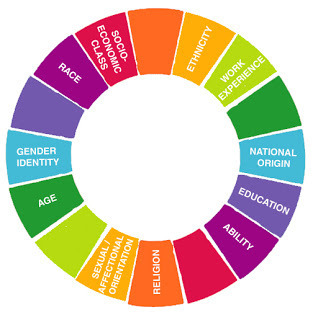

Do we see our national diversity when we look at our computer, TV and movie screens? Newspaper and magazine editors and reporters? Publishers' lists, book reviews and reviewers? Politicians and national leaders? Also, our complex national diversity is not yet appropriately recognized and celebrated in the sciences or the arts.
The theme for this year's National Women's History Month Project is Women's Education: Women's Empowerment. This past week I was asked questions about the role of education in my life. I am a first-generation college graduate, and in answering the questions, I was remnded how grateful I feel and how important it is to motivate girls and young women to invest in themselves. I wrote, " My college education was an important factor in whatever success I've had as a parent, teacher, administrator, writer and speaker. For a student interested in new opportunities, a college education can be transformative. It dramatically enriches a life."

Published on March 19, 2012 10:38
March 12, 2012
Creativity Salon: David Fernández-Barrial and Jill Garcia
A few years ago, my escort at the National Book Festival in DC was gracious David Fernández-Barrial. I was intrigued by the specific work he does at the Library of Congress and am delighted that he agreed to participate in our Creativity Salon. I'm also pleased that he invited his colleague, Jill Garcia, to join us too.
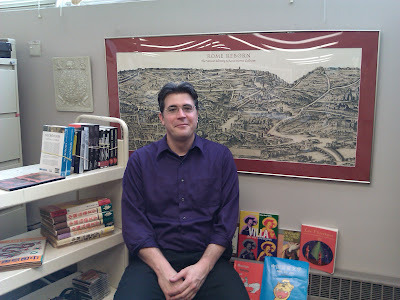
1.What is the National Library Service for the Blind and Physically Handicapped and what are your roles?
David: The National Library Service for the Blind and Physically Handicapped (also known as NLS) is the national library program for persons with blindness, physical limitations or print disabilities that prevent the reading or handling of standard print. NLS ensures that people who have difficulties reading standard print are still able to have access to reading. We are a part of the Library of Congress in Washington DC, which is the world's largest library!
Jill: I select the young adult and kid's books that will be recorded as an audio book and/or read in braille. The titles we choose are for patrons across the entire U.S.
David: And I am the foreign-language librarian at NLS, responsible for selecting books in Spanish and other languages.
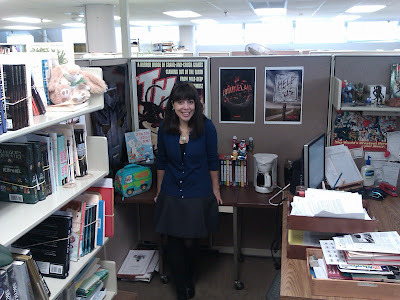
2. Do you consider yourself a creative person? If yes, how does your creativity affect your work?
Jill: Strangely enough, I never really thought about it. But I do get to be creative when I write the annotations for the books I select. We write short descriptions about the books for our patrons. And what really thrills me, is trying to create a summary that entices a person to read a book they normally would never pick up. Now that is pretty cool.
David: Yes, I think we are creative people. Our jobs involve creativity, but we also love words and book culture and actively participate in it. If you are a creative person, it is not as though you come to work and push that creativity aside: it informs everything you do. Outside of work I love to write, and have dabbled in different things like novels and short poems. And within the hallowed halls of the Library, I actively problem-solve, open my mind, and breathe in the centuries of human knowledge. Being creative is a lifelong process: it is about participating fully in the world and being aware of things. Being a librarian makes you hyper-aware of the larger, expansive, and active, volcanic world all around us. A world of becoming.
3. What are your two or three key challenges in the work you each do?
David: One challenge is that things happen very, very slowly in our workplace. We try to accomplish many things, yet they take time and much negotiation. What makes it so rewarding, though, is knowing that your job has such a positive impact on people's lives.
Jill: My biggest, heartwrenching challenge is being limited on how many books I can select for the collection. I love them all, but I can only pick a small amount of what is published.
David: Yes, there are so many good books out there.
4. What were you like as a child? Were you a reader?
Jill: Given the amount of toys laying about at work, I think we both never grew up. Yes, I was a happy, lunatic reader as a child … I carried books with me where ever I went. I had a burning need to be surrounded by the magic of stories. I think that is why I grew up believing that anything is possible, if you just believe.
David: I was a gloomy and morose child, trapped in the world of imagination … no, I am joking. I still am a child. I loved (and love) to read, which is why being a librarian in the world's largest library is really a kid's dream job.
5. Día is one way I promote bookjoy. Do you see possible connections between your work and Día?
David: Día is about promoting bookjoy and inspiring the love of reading. We at NLS help provide access to all readers, including those who are multilingual or multicultural or just want to read books in other languages.
Jill: I agree. We love books and love to make people aware of the great diverse literature out there.
Pat: Many thanks again for your time.
David: It is our pleasure, Pat. It is an honor to talk about our program to let your readers know about how reading, literacy, accessibility of learning materials are a right for every person, including persons with disabilities. And that creativity and love of learning are alive and well in corridors of the temple of knowledge that is the Library of Congress.
Jill: Thank you, Pat. One very nice thing about our jobs is that we can meet great people like you!
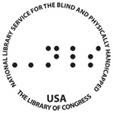


1.What is the National Library Service for the Blind and Physically Handicapped and what are your roles?
David: The National Library Service for the Blind and Physically Handicapped (also known as NLS) is the national library program for persons with blindness, physical limitations or print disabilities that prevent the reading or handling of standard print. NLS ensures that people who have difficulties reading standard print are still able to have access to reading. We are a part of the Library of Congress in Washington DC, which is the world's largest library!
Jill: I select the young adult and kid's books that will be recorded as an audio book and/or read in braille. The titles we choose are for patrons across the entire U.S.
David: And I am the foreign-language librarian at NLS, responsible for selecting books in Spanish and other languages.

2. Do you consider yourself a creative person? If yes, how does your creativity affect your work?
Jill: Strangely enough, I never really thought about it. But I do get to be creative when I write the annotations for the books I select. We write short descriptions about the books for our patrons. And what really thrills me, is trying to create a summary that entices a person to read a book they normally would never pick up. Now that is pretty cool.
David: Yes, I think we are creative people. Our jobs involve creativity, but we also love words and book culture and actively participate in it. If you are a creative person, it is not as though you come to work and push that creativity aside: it informs everything you do. Outside of work I love to write, and have dabbled in different things like novels and short poems. And within the hallowed halls of the Library, I actively problem-solve, open my mind, and breathe in the centuries of human knowledge. Being creative is a lifelong process: it is about participating fully in the world and being aware of things. Being a librarian makes you hyper-aware of the larger, expansive, and active, volcanic world all around us. A world of becoming.
3. What are your two or three key challenges in the work you each do?
David: One challenge is that things happen very, very slowly in our workplace. We try to accomplish many things, yet they take time and much negotiation. What makes it so rewarding, though, is knowing that your job has such a positive impact on people's lives.
Jill: My biggest, heartwrenching challenge is being limited on how many books I can select for the collection. I love them all, but I can only pick a small amount of what is published.
David: Yes, there are so many good books out there.
4. What were you like as a child? Were you a reader?
Jill: Given the amount of toys laying about at work, I think we both never grew up. Yes, I was a happy, lunatic reader as a child … I carried books with me where ever I went. I had a burning need to be surrounded by the magic of stories. I think that is why I grew up believing that anything is possible, if you just believe.
David: I was a gloomy and morose child, trapped in the world of imagination … no, I am joking. I still am a child. I loved (and love) to read, which is why being a librarian in the world's largest library is really a kid's dream job.
5. Día is one way I promote bookjoy. Do you see possible connections between your work and Día?
David: Día is about promoting bookjoy and inspiring the love of reading. We at NLS help provide access to all readers, including those who are multilingual or multicultural or just want to read books in other languages.
Jill: I agree. We love books and love to make people aware of the great diverse literature out there.
Pat: Many thanks again for your time.
David: It is our pleasure, Pat. It is an honor to talk about our program to let your readers know about how reading, literacy, accessibility of learning materials are a right for every person, including persons with disabilities. And that creativity and love of learning are alive and well in corridors of the temple of knowledge that is the Library of Congress.
Jill: Thank you, Pat. One very nice thing about our jobs is that we can meet great people like you!

Published on March 12, 2012 04:00
March 1, 2012
Bookjoy Celebration
Published on March 01, 2012 16:07
February 21, 2012
Book Fiesta Selected for RIF's Multicultural Booklist
Pat's picture book about El día de los niños/El día de los libros, Children's Day/Book Day, Book Fiesta!, was selected as one of forty-five titles on RIF's (Reading is Fundamental) 2011-2012 Multicultural Booklist. The collection celebrates cultures from all over the world and can be used with Grades K-4.
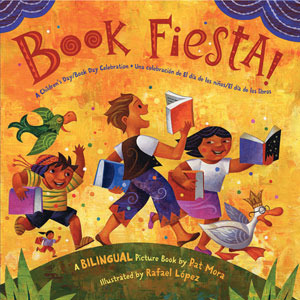


Published on February 21, 2012 08:52
February 16, 2012
A Letter to Child Readers
Each year Pat writes a letter to her young readers. You can read this year's letter below and earlier letters are archived on Pat's website. Teachers, feel free to use this letter for Author Studies or other language arts activities.
Dear Girls and Boys,
Are you patient? I'm not. Right now, far away from me, illustrators are working on art for some of my new books. I can't wait to see the sketches, and I can't wait to hold the finished books in my hands. I always have to wait years for that special moment. I don't get to talk to the illustrators ahead and sometimes I never meet them. I sure like to though.
What do you like to do best: write or draw? Maybe you can do both, or maybe you do the writing and your friend or brother or sister or cousin can illustrate your words. It's fun to make your own books at school, the library and at home.
I'm a writer because I'm a reader. I love to read! Do you know how important being a good reader is? It helps you in all your classes, it helps you be a good writer, and reading is fun. If you're not a good reader now, start practicing. Read every day—for you. Find books about the things you like—horses, bugs, bikes—and read about them. Then you can write your own new book and share it with your family, teacher or friend.
My next book, THE BEAUTIFUL LADY: LA SEÑORA DE GUDALUPE will be out at this time next year. It's an old story about a special lady who years ago appeared on a hill in Mexico. I can't wait to see it! As always, I'm busy working on new books too.
I hope you'll visit my website and see all my books and even some family photos. You can write and tell me what you liked.
Your reading friend,
Pat Mora
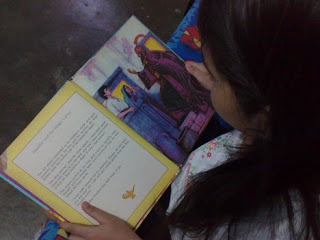 photo: WN/Yolanda Leyba
photo: WN/Yolanda Leyba
Dear Girls and Boys,
Are you patient? I'm not. Right now, far away from me, illustrators are working on art for some of my new books. I can't wait to see the sketches, and I can't wait to hold the finished books in my hands. I always have to wait years for that special moment. I don't get to talk to the illustrators ahead and sometimes I never meet them. I sure like to though.
What do you like to do best: write or draw? Maybe you can do both, or maybe you do the writing and your friend or brother or sister or cousin can illustrate your words. It's fun to make your own books at school, the library and at home.
I'm a writer because I'm a reader. I love to read! Do you know how important being a good reader is? It helps you in all your classes, it helps you be a good writer, and reading is fun. If you're not a good reader now, start practicing. Read every day—for you. Find books about the things you like—horses, bugs, bikes—and read about them. Then you can write your own new book and share it with your family, teacher or friend.
My next book, THE BEAUTIFUL LADY: LA SEÑORA DE GUDALUPE will be out at this time next year. It's an old story about a special lady who years ago appeared on a hill in Mexico. I can't wait to see it! As always, I'm busy working on new books too.
I hope you'll visit my website and see all my books and even some family photos. You can write and tell me what you liked.
Your reading friend,
Pat Mora
 photo: WN/Yolanda Leyba
photo: WN/Yolanda Leyba
Published on February 16, 2012 17:35
February 10, 2012
El día del amor y la amistad
My favorite translation of Valentine's Day in Spanish is El día del amor y la amistad, love and friendship day. Doesn't the addition of friendship make the red-heart-and-sweets-day even more special? Friends have always been an important part of my life: when I was growing up in El Paso, when I taught, and when I was a university administrator. I'm too private to be a Facebook person, but now that I work at home, through phone and e-mail, in addition to my family and long-time friends, I have amigas and amigos who are book friends: authors, illustrators, librarians, educators, members of the publishing world, and my special Día buddies who promote bookjoy all year long. May we cherish those who help us laugh and who believe in us.

photo credit: misfitsalon.blogspot.com

photo credit: misfitsalon.blogspot.com
Published on February 10, 2012 06:00
February 2, 2012
Creativity Interview: Yuyi Morales
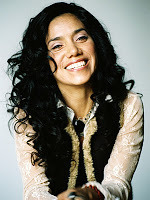 Like many, I admire the multiple talents of Yuyi Morales—author, illustrator, videographer, moving speaker. I also admire Yuyi's creative spirit. Many thanks, Yuyi, for making time for this interview.
Like many, I admire the multiple talents of Yuyi Morales—author, illustrator, videographer, moving speaker. I also admire Yuyi's creative spirit. Many thanks, Yuyi, for making time for this interview.1. What were you like as a child?
YM: A few things that described me as a child:
1. I liked drawing, and I practiced so much that I could draw my own face from memory.
2. I was obsessed with UFOs and constantly feared that extraterrestrials were coming to take me with them.
3. I liked reading, so I devoured all of the comic magazines my father bought on Sundays, the encyclopedia my mother bought for my sisters and I, and many of my father's books, all of which were not for children.
4. When I was five my mother taught me how to crochet, and I made myself a colorful vest and a hat. She also taught me how to knit and use the sewing machine. At school, she would encourage me transform simple school projects and written assignments into models, drawings, and little books.
5. I didn't have many friends, I was what people in Mexico call "seria", which meant that I didn't talk or smile much.
 2. My sense is that you have always thought of yourself as creative. How do you nurture your creativity?
2. My sense is that you have always thought of yourself as creative. How do you nurture your creativity?
YM: Everything in my life is an art project. Just like my mother helped me make simple tasks, like my homework, into creative endeavors, nowadays, most of the things that happen during my daily life, I tend to do it creatively. I love to read, and I have a great need for storytelling. I could watch movies everyday (but I don't because most nights I go to bed late drawing or painting). I like gardening and I look for the compositions and the mixing of colors. I like listening to music, and although I am not a musician, I like to make songs. I love to dance and so I take lessons, and I often break into dancing while I am working. I like taking photographs and sharing them. And I like making friends and loving them. And to me it is all art.
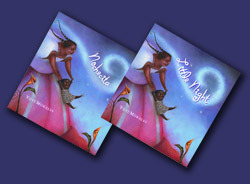
3. Is there a special space that helps you be creative? YM: My studio is the best place in the world. In my studio there is space to daydream, and there is space to work. Having tools around me excites me. I get carried away by thinking about what I could to with materials. But I also need inspiration and references, so having things to look at, as well as places for research such as the library and the internet, give me an urge to create.
4. What are your challenges at this point in your career?
YM: Time is one of my main challenges. I tend to want to have things to materialize immediately. So I have had to learn to be patient, to take my time, and to be gentle with myself and my work. Although I tend to be impatient, I try to take time to exercise, to learn new things, to be with my friends, family, and the people I love, and time to have sacred things in my life. Then, when I am in my studio, I constantly remind myself that steady work will give me the results I want.
5. You have a very intriguing web site. Did you design it yourself?
YM: Yes, I designed it myself a long time ago. At the time, I wanted to have a web site, and not knowing how to get someone to do what I wanted, I decided to learn to do it myself. My husband helped me choose a good book where I could learn HTML. Most of what I did was to take the same approach I use with my art: I played with it. The web page became another blank canvas to be creative with. The result seems to be less functional and more surprising--you just never know what you might find there.

6. You were an early Día supporter. Tell us why and how you think we all could be more creative in promoting Día.
YM: To me Día de los Niños is a very significant day, because I grew up in Mexico where ever since I can remember, my family always celebrated it. When I arrived at the USA, I found myself celebrating alone with my infant son. I had no one else to celebrate it with. Years later, when I was already a published author, I began to be asked to come to libraries to celebrate with hundreds of children, and I couldn't have been more delighted! What was even better was that Día del Niño had been paired with something else I loved: books and reading.
Día de los Niños, Día de los Libros, is one of my favorite days of the year. I am sure that many people have come up with fantastic ideas to celebrate this day; my favorites would be the ones that bring together adults and children through books. Día de los Niños, Día de los Libros is not only a day for children to enjoy and love books, but is also a day for us, adults, to love and celebrate our children by sharing books, reading with them, and connecting forever in that way.
7. Any upcoming projects you want to share with us?
YM: I am currently putting the final touches to a book I wrote titled Niño. In this book there will be a lot of action, and more than one scary character brought from my childhood in Mexico. Also, I am working in a book I wrote about Frida Kahlo, and I have started illustrating a book about the poet Pablo Neruda.
8. How does Yuyi relax?
YM: I have my favorite spot in my garden where two colorful hammocks hang. There, when I need a good time to just be, I swing in one of them looking at the sky and the mulberry tree that holds them. Some times I fall asleep, just like when I was a baby and my mother lullabyed me to sleep, swinging in my crib made of a box weaved into a hammock above my parents bed. I close my eyes, and I am whole again.

Visit Yuyi's blog, Corazonadas.
Published on February 02, 2012 12:07
February 1, 2012
Bookjoy Celebrations
How often do you feel too busy? I seem to feel that way off and on all day. I know: I'm trying to do too much: be present for family and friends, dive into new manuscripts, help promote Día, and
share bookjoy, la alegría en los libros
. Since I long to send the people I care about a cheerful card occasionally, to lift their/your spirits, this year I'll be sending
bookjoy celebrations
. Below is the first.
I welcome your collaboration. Send your favorite quotes about reading, books, poetry; brief original poems, a few lines from writing you love, visuals, ideas, etc. to bookjoyATpatmora.com . (We'll credit you, of course.)
Share Bookjoy all year with friends, family, students, colleagues, children, seniors, neighbors!
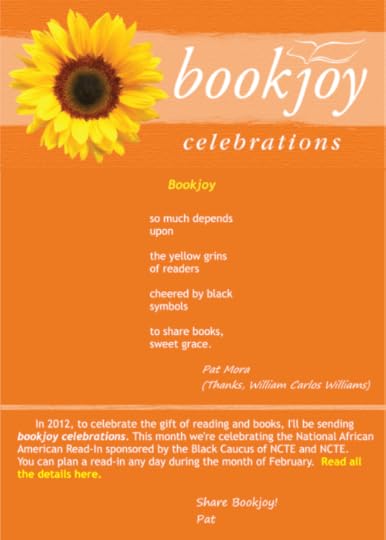

I welcome your collaboration. Send your favorite quotes about reading, books, poetry; brief original poems, a few lines from writing you love, visuals, ideas, etc. to bookjoyATpatmora.com . (We'll credit you, of course.)
Share Bookjoy all year with friends, family, students, colleagues, children, seniors, neighbors!

Published on February 01, 2012 09:15
January 27, 2012
Savor Silence?
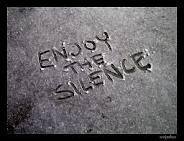 My New Year's resolutions always include 1) create more writing time and 2) be a more effective advocate. There's an inherent tension between these two goals. When I avoid e-mail and devote myself to a writing project, ah! I feel a special pleasure since I relish the time to create on the page, to explore the possibilities of an evolving manuscript. I love to write which for me means: I need quiet.
My New Year's resolutions always include 1) create more writing time and 2) be a more effective advocate. There's an inherent tension between these two goals. When I avoid e-mail and devote myself to a writing project, ah! I feel a special pleasure since I relish the time to create on the page, to explore the possibilities of an evolving manuscript. I love to write which for me means: I need quiet. Some authors manage to write in coffee shops and cafes while I'd stop the refrigerator motor if I could. I savor total silence. A professor who teaches my book, Zing! Seven Creativity Practices for Educators and Students to future writing teachers tells me that the students are most uncomfortable with the second suggested practice: Enjoy quiet. "Really?" I ask surprised. It seems that quiet made the students uncomfortable, nervous. Indeed, their world is probably full of noise--radio, iPods, music in restaurants, elevators, bars, malls; and group sessions in all areas of education and the work place.
A recent article in The New York Times, "The Rise of the New Groupthink," includes Picasso's words, "Without great solitude, no serious work is possible." Eek! Again in 2012, I say to myself, "Pat, you've got to create more quiet for writing. Stay off e-mail."
It's not that I like e-mail (except with family and friends), but it is my connection to the amazing and committed advocates with whom I have the honor to work.
Human creativity is amazing and given our diversity—introverts/extroverts, tidy/messy, sober/silly, Type A/Type B, etc.—we need varying circumstances to produce our unique work. Important as sharing bookjoy is to me, though, I long to write more and better, so: silence in my future.
What do you need to be creative?
(photo credit: Silence by wickednox1)
Published on January 27, 2012 10:56
Pat Mora's Blog
- Pat Mora's profile
- 96 followers
Pat Mora isn't a Goodreads Author
(yet),
but they
do have a blog,
so here are some recent posts imported from
their feed.


